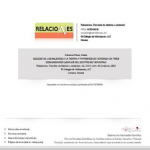Intrahousehold impact of the transfer of modern agricultural technology: A gender perspective
Micronutrient malnutrition is a serious problem in developing countries. It is well established that micronutrient requirements are greater for women and children because of their special needs for reproduction and growth. Unfortunately, however, women and children suffer most from micronutrient deficiencies. Micronutrient deficiency impairs the cognitive development of young children, retards physical growth, increases child mortality, and contributes to the problem of maternal death during childbirth.











